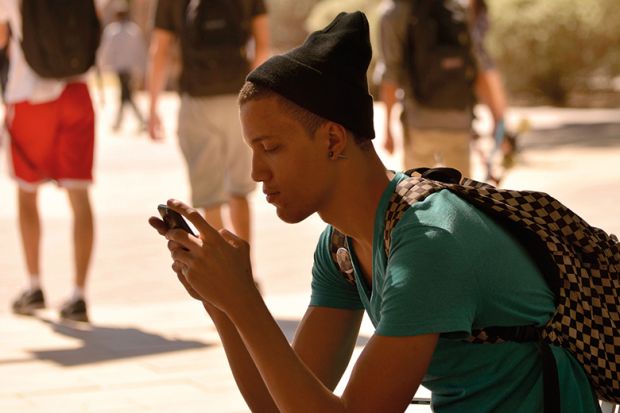Clearing can be a stressful and disorientating time for students as they frantically search for a university and a course that matches their aspirations. And during stressful times, it’s not unusual to crave familiarity, and there is little more familiar to the current generation of 16- to 18-year-olds than social media.
Today’s sixth-formers are constantly active on social media platforms, whether Snapchat, Facebook, LinkedIn or Twitter, and are as used to communicating with their thumbs as they are with their voices. Naturally, they want to make important decisions in their lives on social media, too. Mature students are not far behind, and are just as familiar at using technology and social media for many aspects of everyday life, from banking and paying their bills to communicating with friends and families.
Traditionally, clearing has involved students securing their place at university over the phone, which means that they have to speak to universities that they have likely never been in touch with before – a process that they they can find daunting.
With social media platforms becoming the norm and the dominant means of communication, universities and other institutions need to take this into account when thinking about how to engage prospective students. Ignoring such a significant shift in student behaviour when it comes to the use of social media could be a costly mistake for universities during clearing. This explains our ambition, at the University of Bedfordshire, to handle more and more of our clearing applications on social media platforms. We first introduced our own live chat to make offers during clearing in 2013, and this year we intend to expand the number of social media channels through which we offer advice and make offers with the addition of Facebook and LinkedIn.
Increasingly, more and more enquiries from students to our clearing team are digital, and the number of offers that we make through social media is growing steadily. Last year saw a 20 per cent increase in the number of offers that we made through our website’s live chat in private messages. Rather than using the telephone route, which can be cumbersome for many, social media allows the process to take place within the students’ comfort zones and ensures that they are more likely to take the time and ask the right questions.
Looking forward, we can see this trend continuing and expanding even further. Engaging with new applicants through their favourite social media platforms has numerous advantages; it is responsive, in tune with the needs and expectations of our students, and it allows us to provide a more sensitive and helpful service, fit for generation Z and beyond.
The convenience and speed of social media are also important factors to consider when providing prospective and current students with advice and guidance, especially during crucial times such as clearing. Platforms such as Facebook, with its live chat facility, can provide an ideal means to communicate vital information about student life to lots of students, all with the same background and the same questions, all at once. This not only saves time, it is also more sensitive; for example, many applicants might feel uneasy or embarrassed about asking questions that could seem trivial, and it is far more likely that they will be put off asking them on the phone than in an inclusive and familiar live chat session.
However, institutions thinking about strengthening their recruitment initiatives through social media need to bear in mind that today’s prospective students are very aware of online marketing and crave authenticity. Too much top-down marketing will be noticed and perceived as sterile from the tech-savvy generation.
Students want to see unfiltered and non-scripted experiences. Social media platforms are valued and regarded as trustworthy because they allow individuals to engage peer to peer and share their beliefs and experiences. This is why it is important to actively engage students and prospective students in the process of creating social media material about an institution and its offering. Fostering a culture that encourages students to create content that can be used on universities’ own channels, with everybody in the student community contributing to social media activities, can be a powerful tool for universities.
Social media is the way of the future when we’re talking about engaging with prospective students. There are no signs that this will disappear and that tomorrow’s students will revert to traditional phone calls as their preferred method of communication. It is, nevertheless, very important to keep abreast of the latest social and technological developments within the social media world, as the specific platforms that students and applicants favour tend to change quite quickly. Recently, we have seen signs of far greater engagement with Instagram and Snapchat, and less with Twitter, for example.
Universities and other institutions that want to engage current and prospective students must think long and hard about how to expand their social media presence as well as how to keep it up to date and authentic. The race to change and revisit how processes such as clearing work is on, and with the current pressure that universities are facing to recruit students, social media can make a difference to who will cross the finishing line first.
David Seaton is assistant director of marketing, admissions, recruitment and communications at the University of Bedfordshire.
